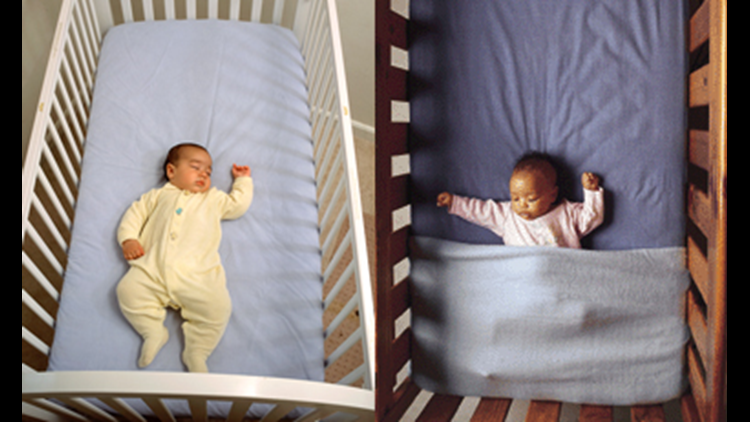A new study shows that despite the risks, parents are still using dangerous bedding for infant children.
“Pediatrics” conducted a student from 1993 to 2010, and the results were released on Monday. The study showed that although fewer parents are using potentially hazardous bedding–which is defined as pillows, quilts, comforters and loose bedding by the American Academy of Pediatrics–many still are putting their infants at risk for sudden infant death syndrome, or SIDS.
The average number of infants reported as being placed to sleep with any hazardous bedding was about 85.9 percent in 1993-1995, and that number was reduced to 54.7 percent on average from 2008-2010. The decline in bedding use between 2001 and 2010 was much more significant than from 1993 to 2000.
Recommendations from the AAP about not using certain beddings for infants were first issued in 1996, and it wasn’t until 1999 that the AAP–along with the Consumer Product Safety Commission and the National Institute of Child Health and Human Development–that an alert was issued recommending infants “be placed to sleep on their backs on a firm, tight-fitting mattress in a crib that meets current safety standards and that pillows, quilts, comforters, sheepskins and other pillow-like soft products be removed from the crib.”
Between 2000 and 2010, the rate of SIDS decreased from 66.3 to 52.7 per 100,000 live births.
The study concluded that young mothers were most likely to use hazardous bedding, and other strong predictors included non-white race and ethnicity and not being college educated. Other conclusions included that babies who were born preterm–at less than 37 weeks–were nearly 10 percent more likely to be bedding users, and that bedding use was most prevalent in the West.
The AAP says that bedding use is a modifiable risk factor for SIDS and other unintentional sleep-related suffocation, and that was the premise for the study.
The study was conducted by asking caregivers about their habits over the two weeks before the study. The first question was “During the past 2 weeks, which of the following items were usually placed under [infant] while [he/she] slept?” The answer was presented as a “yes/no,” with options for blanket, bean bag, waterbed, rug, sheepskin, cushion, sleeping bag or pillow. If a caregiver had two “yes” answers, the infant was classified as a bedding user.
The second question was “During the past 2 weeks, which of the following were usually used to cover [infant] when [he/she] slept at night?” Again, a “yes/no” was provided with the options of sheet, blanket, quilt/comforter, sheepskin, pillow or other. If a caregiver answered “blanket,” he or she was asked to elaborate if the blanket was thicker than a receiving blanket. The study excluded thin blankets–those thinner than a receiving blanket–because the AAP hadn’t recommended the removal of those blankets during the study period.
To read the full study, click here.



